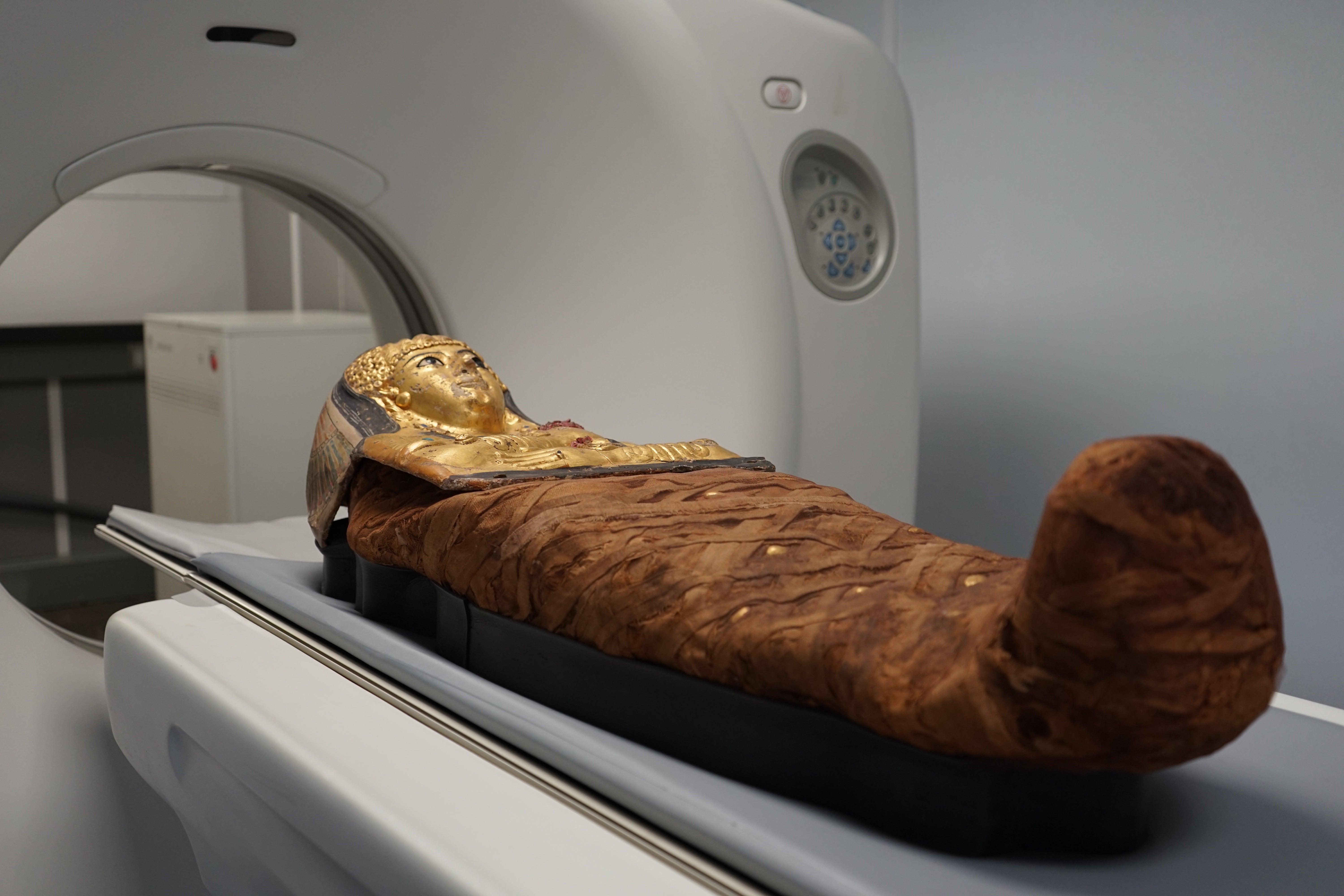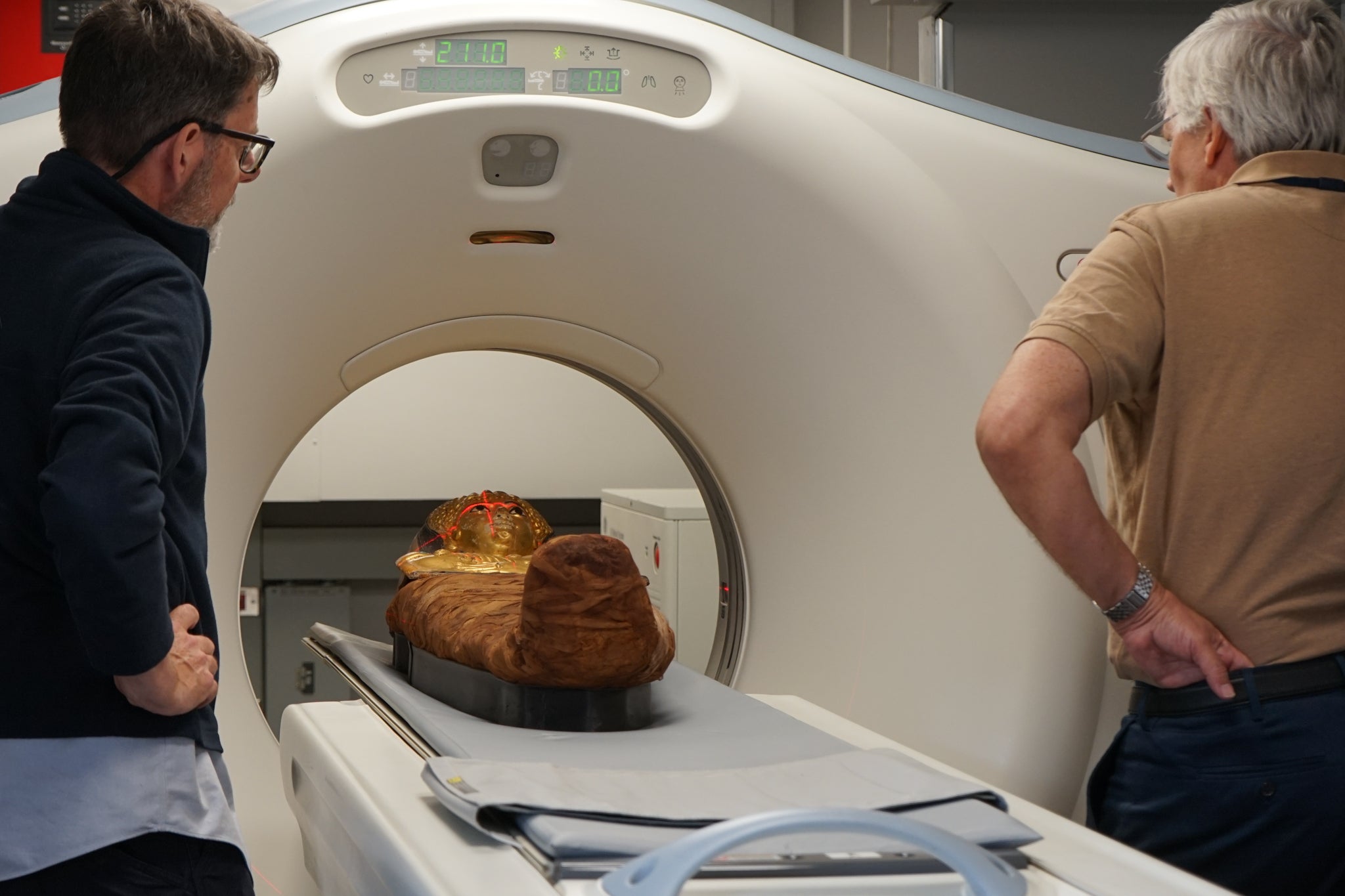X-ray scans answer 3,000-year-old mystery of Egyptian ‘locked mummy’
Scans reveal ancient Egyptian aristocrat was as in her 30s or early 40s at time of death
Your support helps us to tell the story
From reproductive rights to climate change to Big Tech, The Independent is on the ground when the story is developing. Whether it's investigating the financials of Elon Musk's pro-Trump PAC or producing our latest documentary, 'The A Word', which shines a light on the American women fighting for reproductive rights, we know how important it is to parse out the facts from the messaging.
At such a critical moment in US history, we need reporters on the ground. Your donation allows us to keep sending journalists to speak to both sides of the story.
The Independent is trusted by Americans across the entire political spectrum. And unlike many other quality news outlets, we choose not to lock Americans out of our reporting and analysis with paywalls. We believe quality journalism should be available to everyone, paid for by those who can afford it.
Your support makes all the difference.X-ray scans have finally unravelled the mystery of how a famous ancient Egyptian “locked mummy” was placed inside a coffin with seemingly no entry point.
Out of the over dozen Egyptian mummies housed in Chicago’s Field Museum, the one of an aristocrat Chenet-aa who lived 3,000 years ago has stood out in particular due to her strange burial procedure.
Soon after her death, her body seems to have been prepared for the afterlife by enclosing it in a peculiar paper mache-like box with no hint of a visible seam.
This left modern-day researchers perplexed about how her remains were placed inside, creating what they call a “locked-mummy mystery”.

Now CT X-ray scans of the coffin have thrown light on the wrappings that have helped preserve Lady Chenet-aa’s remains for more than 3,000 years.
“You can start to see that there’s a seam going down the back and some lacing,” JP Brown, senior conservator of anthropology at the Field Museum said.
The latest analysis revealed that the mummy was stood upright and then the cartonnage coffin was softened with humidity till it became flexible enough to mould around the body.
Then a slit was made at the back from head to foot, opened up, and the wrapped body was lowered down, researchers say.
The slit was then closed by a seam and a wood panel pegged in place at the feet to keep everything together, they say.

Scans also revealed that Lady Chenet-aa was in her 30s or early 40s at the time of her death 3,000 years old.
She seems to have lost several teeth due to the food she ate containing grains of sand that were tough on the enamel.
Inside the coffin, her mummified remains also had supplementary eyes placed in her eye sockets to ensure they came with her to her afterlife.

“The Ancient Egyptian view of the afterlife is similar to our ideas about retirement savings. It’s something you prepare for, put money aside for all the way through your life, and hope you’ve got enough at the end to really enjoy yourself,” Dr Brown explained.
“The additions are very literal. If you want eyes, then there needs to be physical eyes, or at least some physical allusion to eyes,” he said.
The research, according to scientists, is an indication of the new kinds of information CT scans can tell us about ancient mummies preserved in coffins.

Join our commenting forum
Join thought-provoking conversations, follow other Independent readers and see their replies
Comments